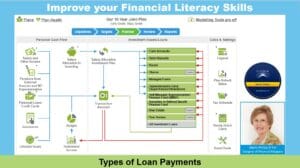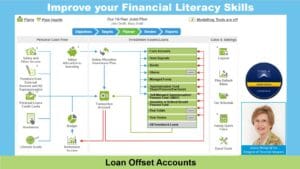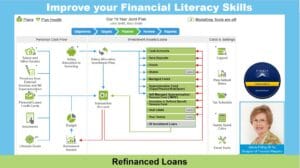It is important that the loan suits your specific needs, especially when considering various loans available in the market. These needs will vary depending on your current financial situation and the purpose of the loans you are considering. Depending on the purpose of the loan, you may want to consider if you are better to save rather than borrow, or at least defray the cost of borrowing by saving a larger deposit for your loans.
- Types of Loan Payments
- Loan Offset Accounts
- Refinanced Loans
If you are using a mortgage broker or a financial adviser, there may be value in discussing the best way forward with your loan management. They may be able to source better loans for you. However, before you go down this track, check out the cost of these services.
Types of Loan Payments
The amount of loan payment where two loans are for the same amount and interest rate are Interest Only Loans, where only the interest is paid with the capital being repaid in full at the end of the loan. The second type of loan payment is a Principal and Interest loan, where the loan payments are the same, but the ratio of capital and interest will vary during the loan. In the initial stages of the loan, the interest costs will be higher and decrease as more capital is repaid over the length of the loan.
When negotiating the loan, you may request a combination of the two, commencing with an Interest Only Loan, to lower the cash flow commitments, followed by a Principal and Interest Loan so that the original capital is repaid in full.
For more information watch this short video: Types of Loans.
Loan Offset Account
A Loan Offset Account allows you to defray the cost of your loan, because you receive no interest on the account, but the savings held in that account are deducted from the loan balance. This results in a two-fold benefit. Firstly, your loan interest costs are reduced while you can redraw funds from the Offset Account, should you require the money to meet other expenses. Withdrawing money from Offset Account, will increase the loan balance on which your interest is calculated.
For more information watch this short video: Loan Offset Accounts.
Refinanced Loans
You may choose to Refinance your loan, if interest rates have declined. It is important to ensure that the cost of refinancing the loan does not outweigh the benefits of the lower interest costs.
A second reason to Refinance your loan, may be to borrow additional funds. For example, you want to complete renovations on your home.
For more information watch this short video: Refinanced Loans.
Other Considerations
Other considerations are the amount of the Deposit, the Length of the Loan and the Interest Costs. Each will have a different effect on your cash flow. These are discussed in the article What Loan Decision will Affect your Cashflow?
Over the years, consumers seem to be more self indulgent when it comes to distinguishing between “Wants” and “Needs”. This can result in a person being overwhelmed with personal debts for which they do no add value to their long term wealth. Instead, they are bogged down with loans that do nothing but hinder their cash flow. This is of serious concern. So before you embark on your next loan, ask yourself is the object you are buying really necessary or are you better to save for it and be debt free.
Only you can decide how important this loan is for your well-being.
Financial Mappers FREE
With Financial Mappers FREE is now available. Click here to join.
Glenis Phillips SF Fin – Developer of Financial Mappers and Advice Online
Disclaimer: Financial Mappers does not have an Australian Services License, does not offer financial planning advice, and does not recommend financial products.










